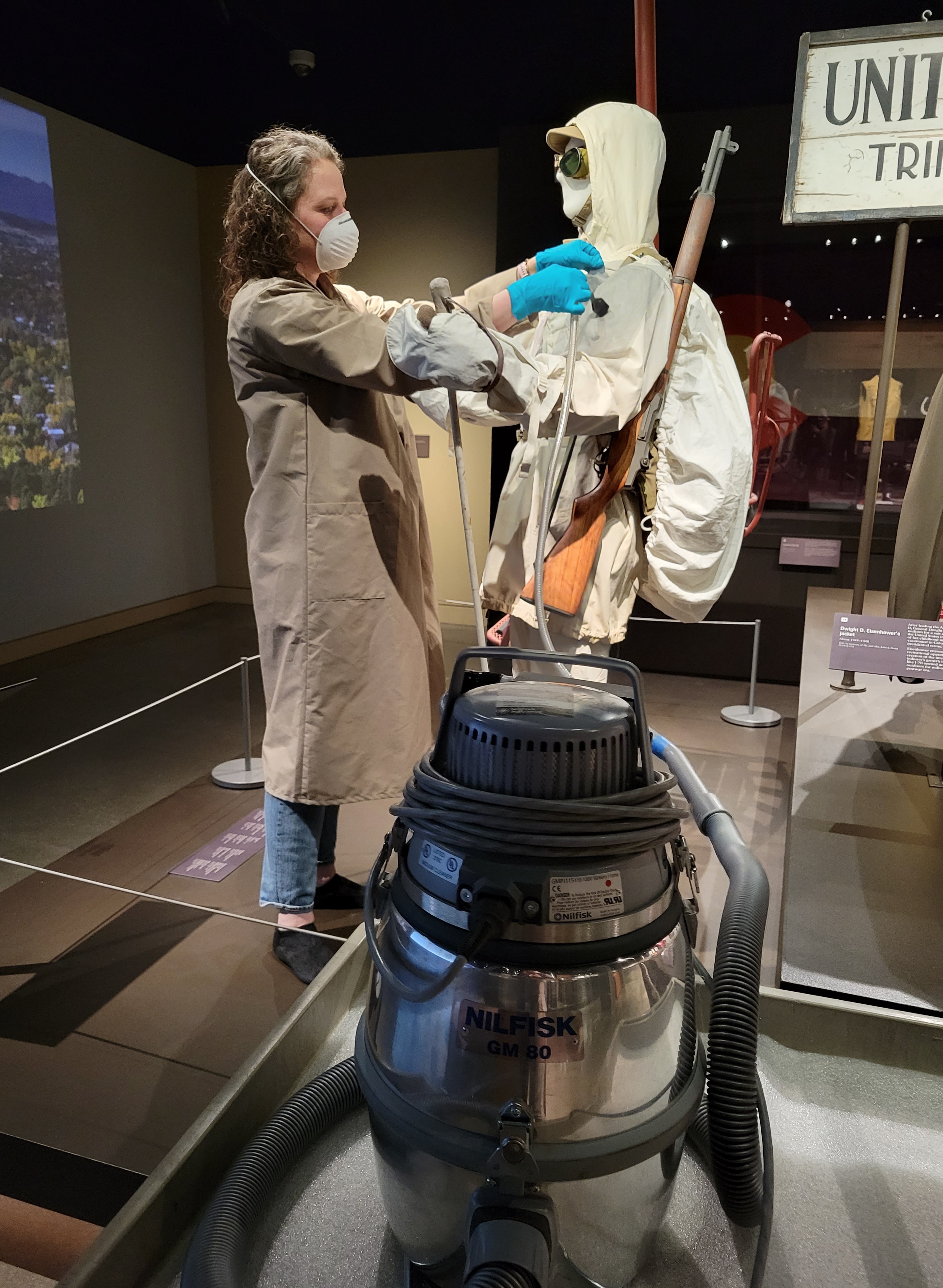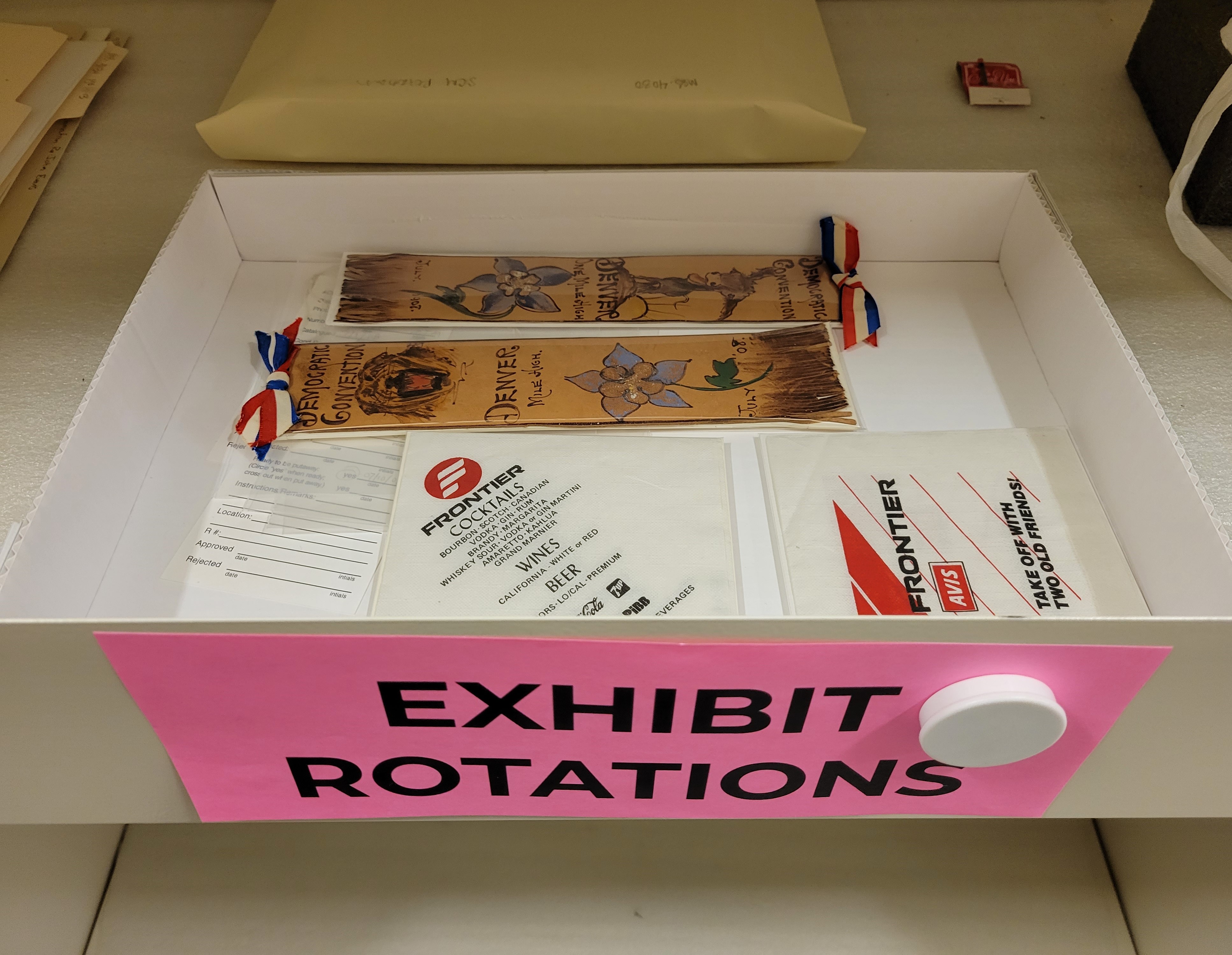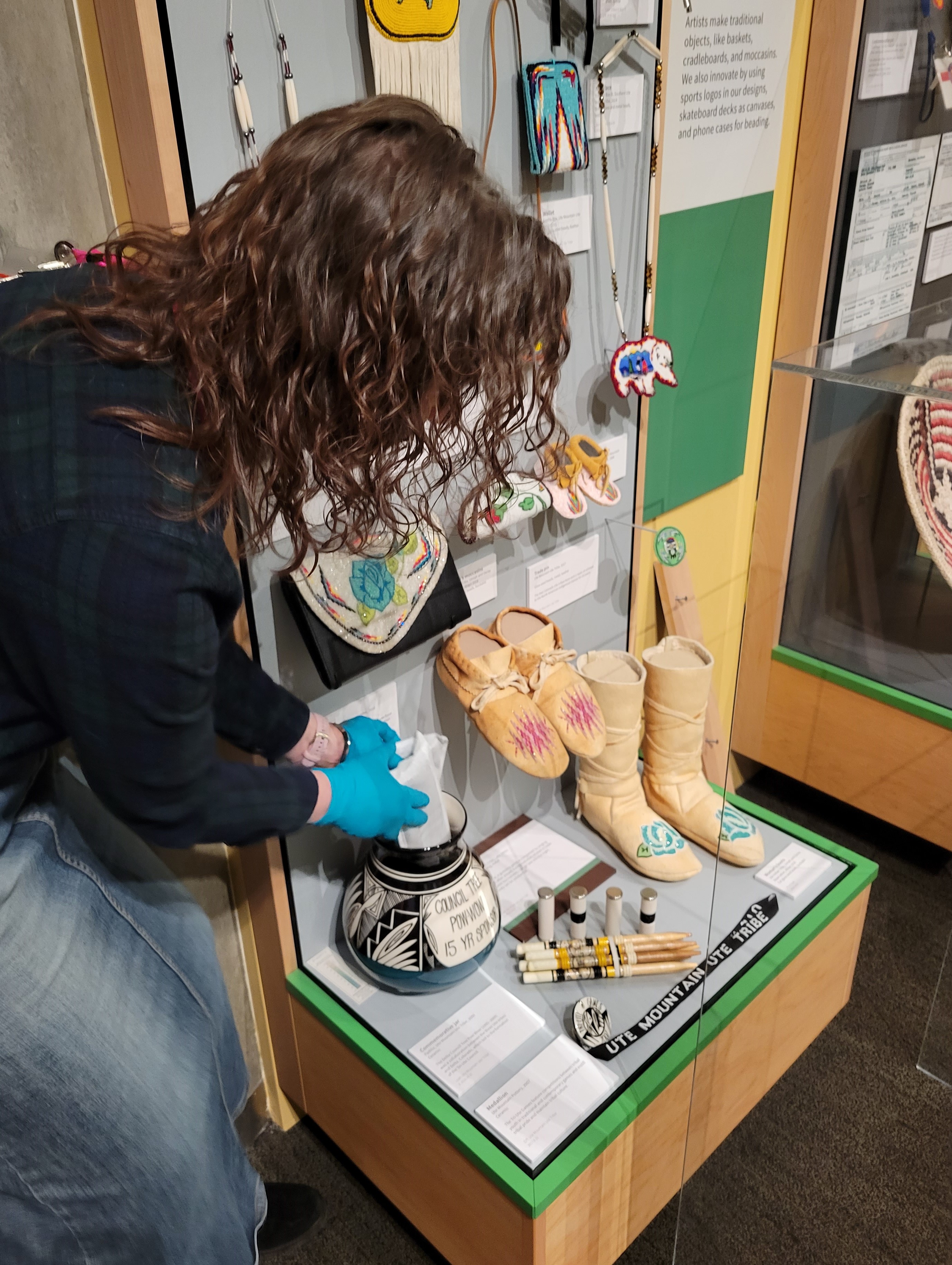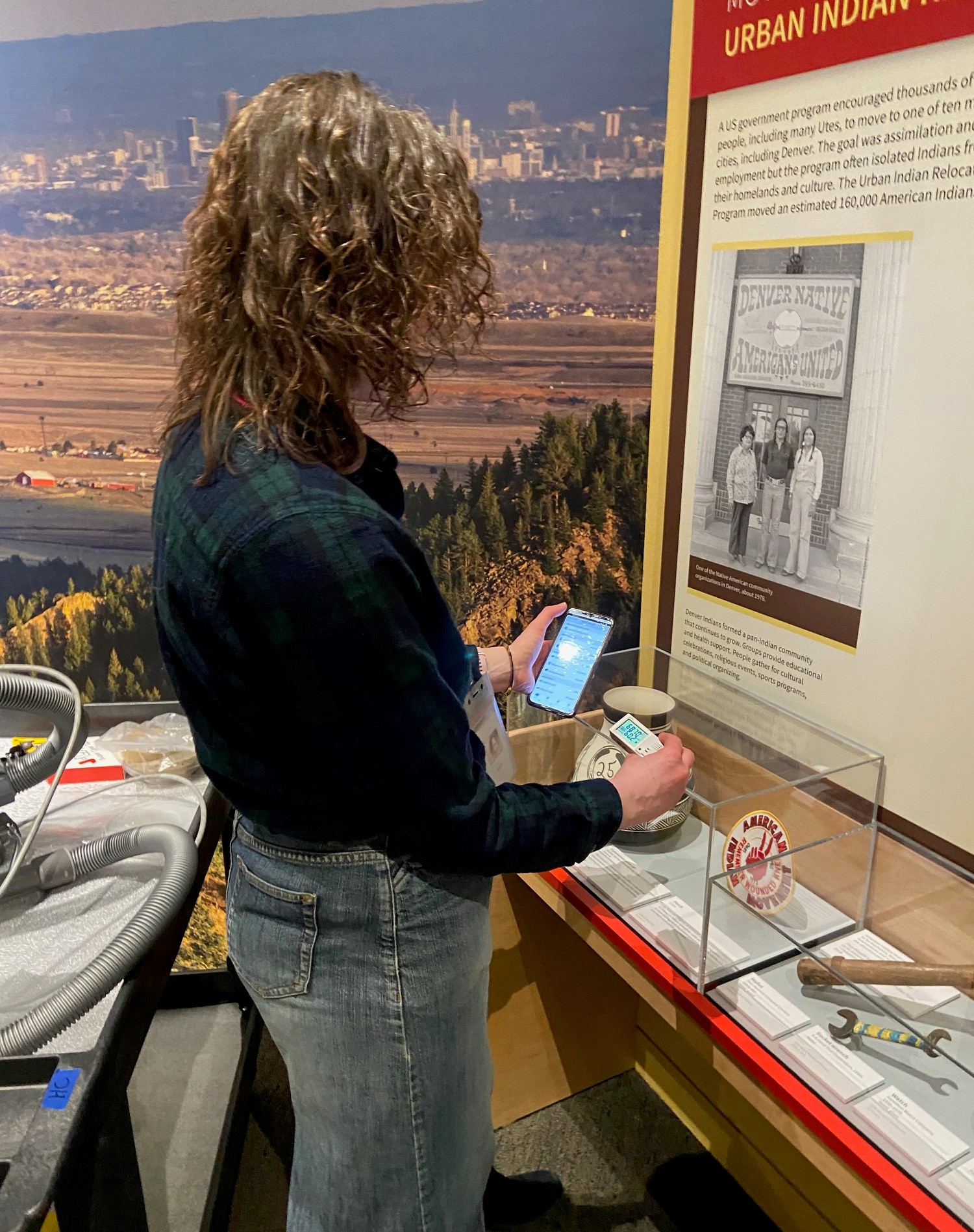Story
Busy Behind the Scenes
Caring for collection items never stops, even in core exhibitions at the History Colorado Center.
History Colorado’s collections items are precious, and even after an exhibition opens to the public, the objects on display are continuously monitored, cleaned, and even swapped out. I am History Colorado’s Exhibits and Loan Registrar, and as part of my job, at least every four months I check in on the objects on view throughout the museum in Denver. Most of my time is spent caring for books and papers because they are most sensitive to light. They often need to be swapped out for similar items to recover from any potential damage sustained while on exhibition. In the bright lights of museum galleries, pages fade, dust builds up, and if moisture or bugs get in (something Collections staff works hard to avoid), irreplaceable objects could succumb to agents of deterioration.
For example, within the Zoom In: The Centennial State in 100 Objects exhibition on the third floor of the History Colorado Center, I change the pages visitors see on view. My job is to remove the protective plexiglass cases and flip to the next page in all of our paper documents, including the International Sister City Resolution and Partnership Agreement of Axum, Ethiopia and Denver, Colorado (2003.16.2); the Colorado State Constitution (IL.2017.17); and the Bent family bible (H.103.1).
Using archival bootstrapping and tape, each new page is turned and secured, which keeps the pages from moving but helps put less stress on the binding.
Periodically, I will also vacuum the many textile objects that are not in protective plexiglass cases. This prevents dust from settling into the fibers and soiling the objects. It also prevents particles from objects that may have been manufactured using heavy metals (white glass beads used arsenic and weighted silks were treated with lead) from staying around and contaminating other objects while also helping to reduce our staff’s exposure to carcinogenic chemicals.
To remove dust from textiles, I use a HEPA-filter vacuum cleaner and wear a protective mask and gloves (and sometimes even a dust jacket). By slowly vacuuming on a low setting using a micro-tool, I am able to remove dust and other airborne debris and keep our objects clean.
Some items are particularly prone to light damage or changes in humidity or temperature. These objects are staged in our museum’s secure, climate-controlled collection storage vault. For example, in the History Colorado Center exhibition Zoom In, a Democratic Party Convention Ribbon (2017.37.2) and a Frontier Airlines napkin (83.364.22) are changed out with other examples to prevent the colored ink from fading.
Another exhibition, Written on the Land: Ute Voices, Ute History, requires changing out baggies of activated carbon to protect important and beautiful beaded objects. The activated carbon captures air pollutants and any smells that off-gas as objects age. I like to place new packets of activated carbon (made from coconut shell husks) discreetly in the case and then throw away the old packets with all the captured pollutants.
One final activity I regularly complete is checking the environmental data-loggers scattered throughout all of our exhibition spaces at the Center. Each logger’s data is wirelessly uploaded to my phone, and History Colorado staff monitor and track environmental data like relative humidity and temperature to ensure the HVAC system is stable and the objects are preserved in the best possible condition. Since abrupt fluctuations cause objects to crack or tear, a reliable temperature and relative humidity keep the objects safe and in their optimal condition for visitors well after an exhibition is open.
Interested in learning more about how we care for our collection? Visit h-CO.org/Collections to view our objects, or email cosearch@state.co.us with any questions you might have about our work. I hope that knowing a little bit about my work helps you think about everything that happens behind the scenes to ensure the state’s collection of historic objects, images, and documents stays safe and healthy for the next generation of Coloradans.





